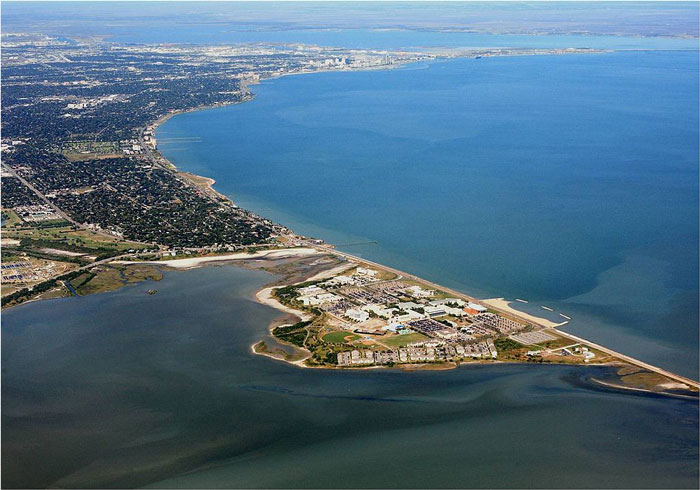Whiskey and the Battle of Corpus Christi
The Texas Story Project.

For two days in the summer of 1862, the then-Confederate city of Corpus Christi was bombarded by a mini-squadron of Union light-draft vessels led by Lieutenant John W. Kittredge. Although most of the nearly 400 shells fired from the U.S. Navy vessels exploded, several were duds. Did they fail because of faulty powder or fuses? Or could it have been something else? Turns out, it was something else.
No account of the Battle of Corpus Christi (August 16 and 18, 1862) would be complete without a reference to the artillery shells that are now a part of Corpus Christi folklore. The story goes that in those "dud" shells fired by the Union ship, the gunpowder had been replaced with whiskey that crew members had stolen from their captain’s private supply. The first writer to describe this event was Lea (Leah) Cohen Harby, who quoted Lieutenant Kittredge in her article At Corpus Christi, published in Leslie’s Illustrated Weekly on February 13, 1892:
"Some little time before the bombardment, a barrel of my best Bourbon whiskey disappeared. I could find no trace of it, yet regularly after watch the men were found to be smelling of liquor. No one knew where it came from, how they got it, where they kept it: but liquor they had, that was sure. You have given me the explanation: they must have drawn the charges from the shells that were piled on deck and filled them with the stuff, drinking it when on watch. Evidently their store was not exhausted when I used the shells. I now comprehend why they would not explode—a fact which puzzled me at the time.”
Mrs. Harby had published articles and respected journals and presented a paper at the 1891 meeting of the American Historical Association. Still, she was not a trained historian—she clearly took liberties in writing her account of the whiskey shells, and her story contains numerous factual errors. Her most likely source for the Battle of Corpus Christi and its aftermath was James Ware, who, in 1892, was a resident at the Old Soldiers’ Home in Austin. Captain Ware had played a conspicuous role in both the battle and the capture of Kittredge.
Although whiskey shells are not mentioned in any official report, Union or Confederate, another unofficial reference is found in a biographical sketch of Felix von Blucher by Mrs. Charles von Blucher in Pathfinders of Texas, 1836-1846 (1935). Felix had directed the Confederate gunners during the battle and would have known about the whiskey shells. Mrs. Von Blucher writes:
"Many of the cannon balls that fell in Corpus Christi did not explode, and the experts on the Confederate side were able to open them without exploding the caps. The powder inside was then used by the people in their firearms, as powder was scarce. Occasionally, a bombshell, upon being opened, was found to contain very fine whiskey, which was a pleasant surprise to many. After the war, it was explained that Captain Kittredge had had on board some fine liquors, and that some of the marines conceived the idea of extracting the fuse cap and powder from some of the bombshells and replacing the same with liquor taken from Captain Kittredge’s barrels; the fuse cap was replaced to avoid detection."
John W. Kittredge, the one-time “Terror of the Texas Coast,” spent the postwar years selling coal in New York City. He died in 1889, three years before Mrs. Harby’s article about the shells filled with his whiskey was published.
Norman C. Delaney, Ph.D., a member of the Nueces County Historical Commission, is a specialist in Civil War History.
Posted January 05, 2015